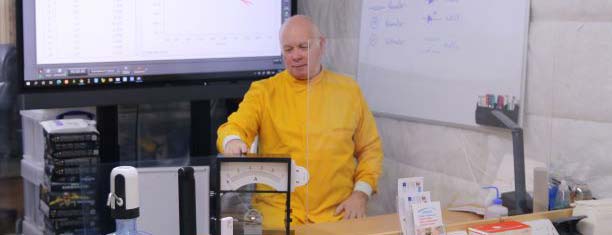Demonstrated pressure online was a bit of a challenge, but I succeeded in doing it in a bowl quite effectively. Running out of hands is the most significant problem. The depth of water can have a significant effect on pressure. As the depth of water increases, the pressure at that point increases as well. This relationship is known as hydrostatic pressure, and it is the pressure exerted by a fluid due to the weight of the fluid itself.
The hydrostatic pressure is directly proportional to the depth of the fluid, meaning that the pressure increases as the depth of the fluid increases. The formula for calculating the hydrostatic pressure is P = ρgh, where P is the pressure, ρ is the density of the fluid, g is the acceleration due to gravity, and h is the depth of the fluid.
For example, if the depth of water is 10 meters, and the density of water is 1000 kg/m³, the pressure at that depth would be:
P = (1000 kg/m³) x (9.81 m/s²) x (10 m) = 98,100 Pa
This means that the pressure at a depth of 10 meters in water is approximately 98,100 Pascal, which is much greater than the pressure at the water's surface.
The bottle with holes in different depths shows how, with more depth of water, the pressure inceases.
Here's a simple experiment you can do to demonstrate how the pressure increases as the water depth increases:
Materials needed:
- A clear, plastic bottle
- Water
- A ruler
- A pressure sensor or a small balloon
Procedure:
- Fill the plastic bottle with water.
- Place the pressure sensor or small balloon into the bottle, making sure it is completely submerged in the water.
- Use the ruler to measure the depth of the water in the bottle, starting from the surface of the water to the bottom of the bottle.
- Record the pressure reading on the pressure sensor or observe the expansion of the balloon.
- Slowly add more water to the bottle, making sure to keep the pressure sensor or balloon submerged in the water.
- After adding more water, measure the new depth of the water in the bottle and record the new pressure reading on the pressure sensor or observe the new expansion of the balloon.
- Repeat steps 5 and 6 several times, gradually increasing the depth of the water in the bottle.
- Compare the pressure readings or the sizes of the balloon at each depth, and note how they increase as the depth of the water increases.
Explanation: As more water is added to the bottle, the depth of the water increases, which in turn increases the pressure at the bottom of the bottle. This increased pressure is caused by the weight of the water above it, which exerts a force on the water at the bottom of the bottle. This force, in turn, causes an increase in the pressure on the pressure sensor or the balloon. By observing the changes in pressure as the depth of the water increases, you can demonstrate how pressure increases with depth in water.







No comments:
Post a Comment